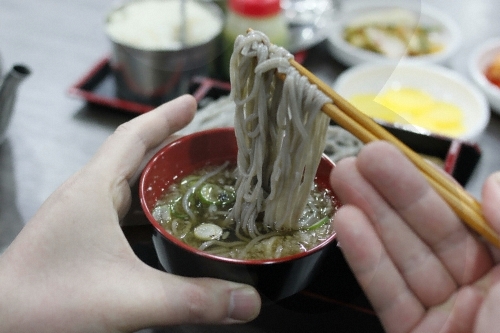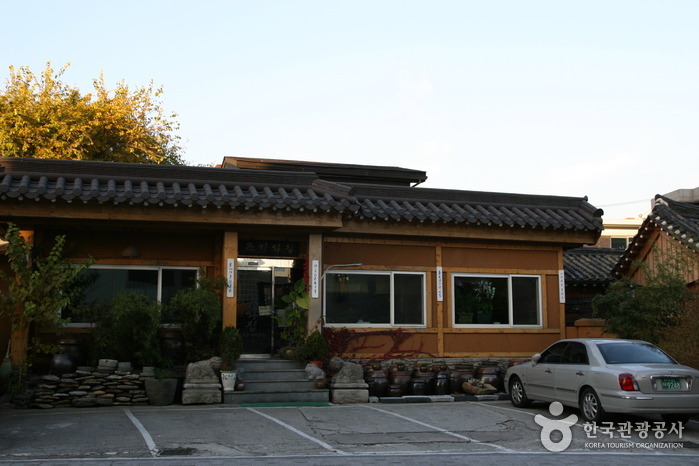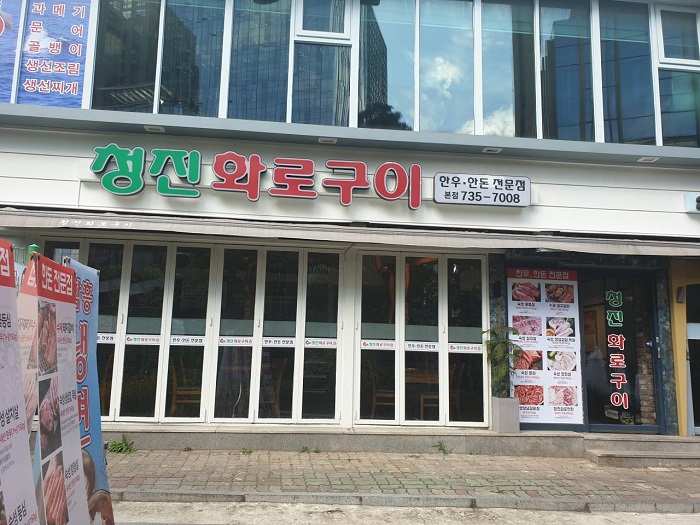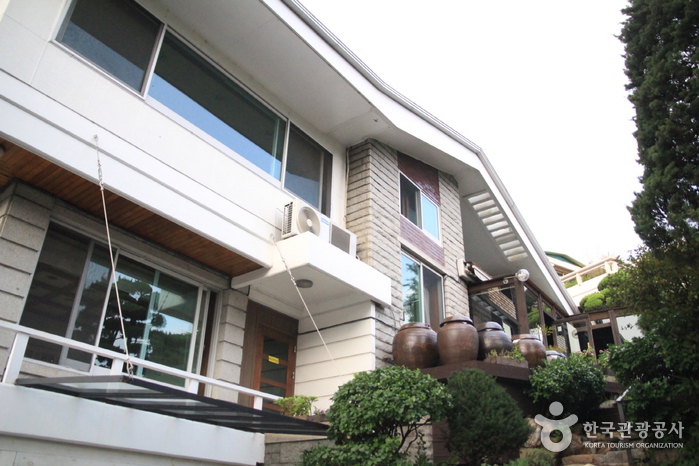Centro de Información de Estancias en Templos (템플스테이 홍보관)
1.4Km 2022-09-28
Ujeongguk-ro 56, Jongno-gu, Seúl
El centro es un complejo cultural de cinco plantas donde se encuentran la mayoría de oficinas responsables de las estancias en templos, centros de información, centros educativos, un restaurante de comida budista tradicional llamado Balwoo Gongyang, entre otros.
The Painters 2 (페인터즈 시즌2)
1.4Km 2024-07-25
Jeongdong-gil 3, Jung-gu, Seúl
+82-2-766-7848
Mijin (미진)
1.4Km 2020-01-30
19, Jongno, Jongno-gu, Seoul
+82-2-732-1954
Mijin is a restaurant specializing in spicy hot baby octopus and cool buckwheat dishes. Opened
in 1954, the restaurant's 50-year history is a testament to the great taste
of its dishes and the charm of the restaurant.
The main ingredient, buckwheat, is delivered daily from Bongpyeong, the largest
buckwheat producing region in Korea. Baby octopus is also delivered every morning from ports in Yeosu. Families and workers of surrounding companies are major customers of the restaurant, but celebrities and politicians also
come to the restaurant to taste its food. Memilmuk (Buckwheat Jelly) and pancakes
made with buckwheat and green onion are also delicacies of the restaurant.
Keungiwajip (큰기와집)
1.4Km 2021-09-27
62, Bukchon-ro 5-gil, Jongno-gu, Seoul
+82-2-722-9024
It’s a 2018 Michelin Guide restaurant. The best menu at this restaurant is soy sauce marinated crab. This Korean dishes restaurant is located in Jongno-gu, Seoul.
Cheongjin Hwarogui (청진화로구이)
1.4Km 2021-03-22
32-12, Jong-ro, 5-gil, Jongno-gu, Seoul
+82-2-735-7008
A store selling Korean beef and pork dishes. The best menu at this restaurant is grilled Korean beef rib eye steak. This Korean dishes restaurant is located in Jongno-gu, Seoul.
Jaha Sonmandu (자하손만두)
1.4Km 2021-03-29
12, Baekseokdong-gil, Jongno-gu, Seoul
+82-2-379-2648
Located in Buam-dong, Jaha Sonmandu is a restaurant specializing in Korean hand-made stuffed dumplings. Though the restaurant’s exterior is that of a classic restaurant, the succulent flavors of the food are reminiscent of grandma’s cooking — timeless and full of love.
Sarangchae (사랑채)
1.4Km 2025-05-14
6, Insadong 16-gil, Jongno-gu, Seoul
Rakkojae Seoul Bukchon Hanok Hotel [Korea Qaulity] / 락고재 서울 북촌 한옥호텔 [한국관광 품질인증/Korea Quality]
1.4Km 2021-10-27
49-23, Gyedong-gil, Jongno-gu, Seoul
The main building in Seoul is a traditional Korean cultural space renovated by Jeong Yeong-jin, a human cultural asset, from a hanok with a history of 130 years. Traditional flags, fences, pavilions, chimneys, and jangdokdae are holding the blue sky with pine trees, creating a harmonious Korean-style house. Passing through the elegant tall gate, as you see the jangdokdae, a small but clean hanok will be revealed, and the pine trees and bamboo trees added to the natural beauty, while the loving Gomusin placed on the stone brings back beautiful memories.
Rakkojae is a place where the customs of the aristocrats in the past are melted in various places, creating a wonderful atmosphere by carefully reviving the pavilion, ponds, and daecheongmaru. Especially, Daecheongmaru adds the beauty of the margins of hanok to give you a sense of refreshment. As the old scholars did, sitting on the pavilion makes the time flow slow and the wind that passes over the Sotdae feels special.
In addition, you can experience the beauty of Korean tradition with various programs such as tea ceremony, jjimjilbang, royal robes, and kimchi-making along with traditional Korean food. Rakkojae's accommodation, reminiscent of a nobleman's house in the Joseon Dynasty, is well-kept and comfortable that it is comparable to a luxury hotel, and the natural jade-covered ondol rooms and firewood jjimjilbangs made of cheongito provide a healthy journey for many guests.
Puerta de la Independencia (Dongnimmun) (독립문)
1.4Km 2022-12-15
Tongil-ro 251, Seodaemun-gu, Seúl.
Dongnimmun se halla en un lugar conocido originalmente como Yeongeun, en donde otrora se trataba a los enviados oficiales. Cuando un enviado chino hacía una visita, el rey salía a través de esta puerta para recibirle. Fue construida en 1897, para anunciar la independencia de China, quien había influido en Corea durante mucho tiempo, y de Japón y Rusia, quienes acechaban al país.
Las expensas de la construcción fueron recaudadas como contribución por los ciudadanos coreanos. Los vestigios del pasado todavía permanecen en Dongnimmun. Los dos pilares enfrente de Dongnimmun son los restos de Yeongeunmun.
Si comparamos Dongnimmun, puede evocarnos al Arco del Triunfo de Francia, ya que este último se tomó como modelo para su construcción. Dongnimmun fue edificada con un muro de granito, y hay un pasillo con una altura de 14,28 metros. En lo alto está escrito “Dongnimmun” en coreano, con la bandera nacional dibujada a cada lado. En el lado interior izquierdo hay escaleras de piedra que conducen al ático. La flor nacional, mugunghwa, está plantada alrededor de Dongnimmun. Ahora está rodeada por carreteras y es llamativa a la vista cuando se pasa por allí.
The Sool Gallery (전통주갤러리)
1.4Km 2025-05-28
Bukchon-ro 18, Jongno-gu, Seúl






![Rakkojae Seoul Bukchon Hanok Hotel [Korea Qaulity] / 락고재 서울 북촌 한옥호텔 [한국관광 품질인증/Korea Quality]](http://tong.visitkorea.or.kr/cms/resource/40/2698240_image2_1.jpg)
 Español
Español
 한국어
한국어 English
English 日本語
日本語 中文(简体)
中文(简体) Deutsch
Deutsch Français
Français Русский
Русский